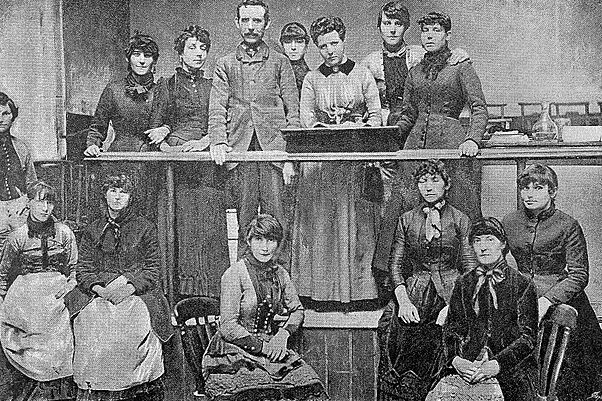Quill Reading for Evidence
Provide your students with nonfiction texts paired with AI-powered writing prompts, instead of multiple-choice questions, to enable deeper thinking. Students read a nonfiction text and build their comprehension through writing prompts, supporting a series of claims with evidence sourced from the text. Quill challenges students to write responses that are precise, logical, and based on textual evidence, with Quill coaching the student through custom, targeted feedback on each revision so that students strengthen their reading comprehension and hone their writing skills.
Designed for 8th-12th grade students, each activity takes 15-20 minutes to complete. These texts cover a wide range of topics, from 21st-century real-world issues to major historical moments and key literary themes.

Video not supported
What Topics Are Covered in Quill Reading for Evidence

Culture & Society
"Should Schools Have Grade Requirements for Student Athletes?"

Interdisciplinary Science:
AI Knowledge
"How Are Marine Biologists Using Machine Learning to Protect Coral Reefs?"

Social Studies:
World History
"How Did British Women Workers Fight for Their Rights in the 19th Century?"
How Students Write to Learn with Reading for Evidence
Read and highlight text

Write sentences using what you read

Revise based on feedback

How Quill Reading for Evidence Gives Feedback
Students read a text and then use what they have read to practice writing sentences. While the content can vary, every strong response must include paraphrased text evidence that is on-topic, clear, and specific. Quill serves individualized feedback in each of these areas, coaching the student to improve their writing one step at a time.
Activity Title:
“Should Schools Have Grade Requirements for Student Athletes?”
1st Attempt
Quill’s feedback bot provides custom feedback for every response that mirrors the feedback a teacher would provide to a student in a 1:1 context.
In this response, it’s true that some people think No Pass No Play laws are unfair, but the student has not specified *why* exactly. Quill asks the student to go back to the text and examine it more carefully to provide a reason why people think these laws are unfair. Students must use precise evidence in their response to be able to successfully complete it.
Prompt:
Critics have opposed No Pass No Play laws because...
Student’s Response:
their worried that the law isn’t fair to students.
Quill Feedback:
It’s true that some people think No Pass No Play laws are unfair. Now, revise your response. Focus on the reason why people think these laws are unfair.
2nd Attempt
The student identified that some people think No Pass No Play laws are unfair for students but did not support their response with a key statistic from the text. Quill encourages them to be as specific as possible to strengthen their response and more accurately respond to the claim.
Prompt:
Critics have opposed No Pass No Play laws because...
Student’s Response:
their worried that the law isn’t fair to students for lots of reasons.
Quill Feedback:
Keep revising! It’s true that some people think No Pass No Play laws are unfair. What do critics think will happen to students who can’t play sports? Read the highlighted text for ideas.
3rd Attempt
The student strengthened their evidence by adding a precise statistic from the text that explains how the laws may affect student dropout rates. Since the key ideas are in place, Quill now provides a mini-lesson on the grammar errors in their response. Quill only provides grammar and spelling feedback once the student has written a strong response with the key ideas from the text.
Prompt:
Critics have opposed No Pass No Play laws because...
Student’s Response:
their worried that the law isn’t fair to students and will make them drop out of school.
Quill Feedback:
Update the bolded word. There is used for locations or for talking about something existing. They’re means they are. Their is used to show ownership.
4th Attempt
At this point the student has now written a precise, textually-supported sentence. Students often come into the tool writing vague or inaccurate statements, and through multiple rounds of practice, feedback, and revision, students gain the ability to utilize precise evidence in their responses.
Prompt:
Critics have opposed No Pass No Play laws because...
Student’s Response:
they are worried that the law isn’t fair to students and will make them drop out of school.
Quill Feedback:
Nice work! You used information from the text to explain why some critics oppose No Pass No Play laws.
All writers revise

You'll be able to revise each sentence up to five times. We give you feedback because we want to help you write a stronger sentence.
We use a feedback bot

We use artificial intelligence (AI) to help us give you feedback on your writing. You should know that AI isn't always correct.
Your teacher will see your score and writing

Once the activity is complete, both you and your teacher will see a report with your score and your responses for each prompt.
Video not supported
Check Out These Relevant Articles
Reading for Evidence Activities Now Provide a Score
We’re excited to announce that we’ve expanded scoring to Quill Reading for Evidence.
Best Practices Highlight: Walking Students Through Reading for Evidence’s Onboarding Pages
When students are new to Reading for Evidence, it can be helpful to walk through the tool's onboarding pages together.
Best Practices Highlight: Introducing Students to Reading for Evidence and the Small-But-Mighty "Because," "But," & "So"
Introducing and framing Quill Reading for Evidence practice is key. Read on for ideas!
Best Practices Highlight: Extending Quill Reading for Evidence Practice
Ideas for extending the practice students are getting with "because," "but," and "so" into content and encouraging skill transfer
"The immediate feedback is like multiplying myself by thirty."
Sean Martin, City Neighbors High School
View My Story